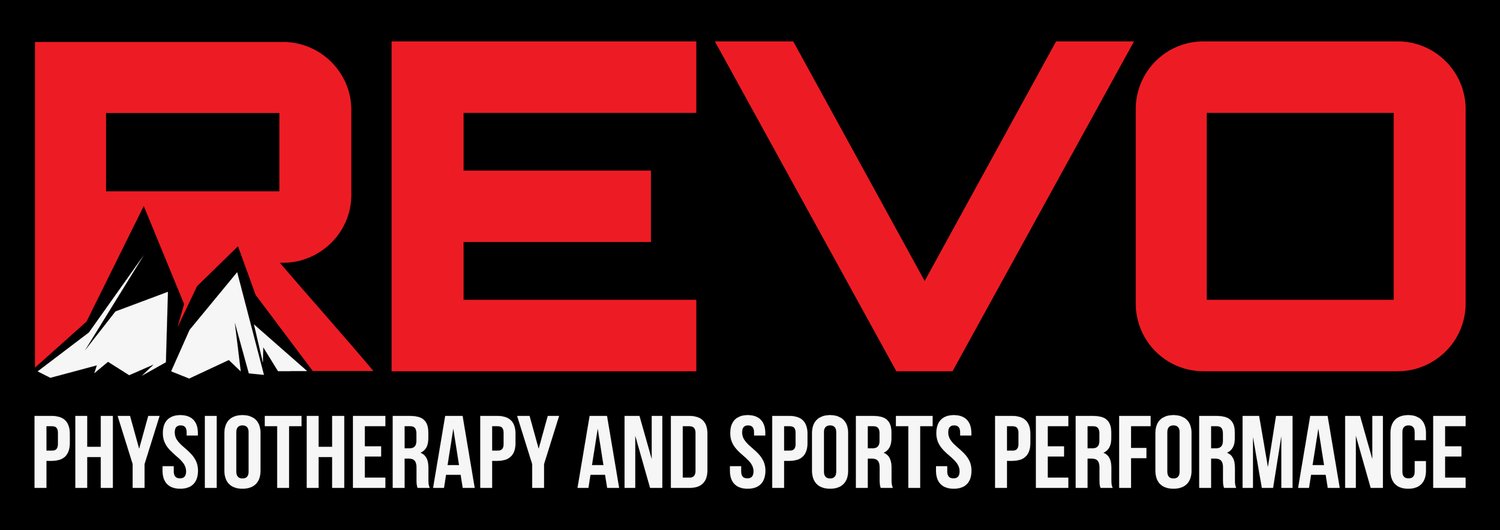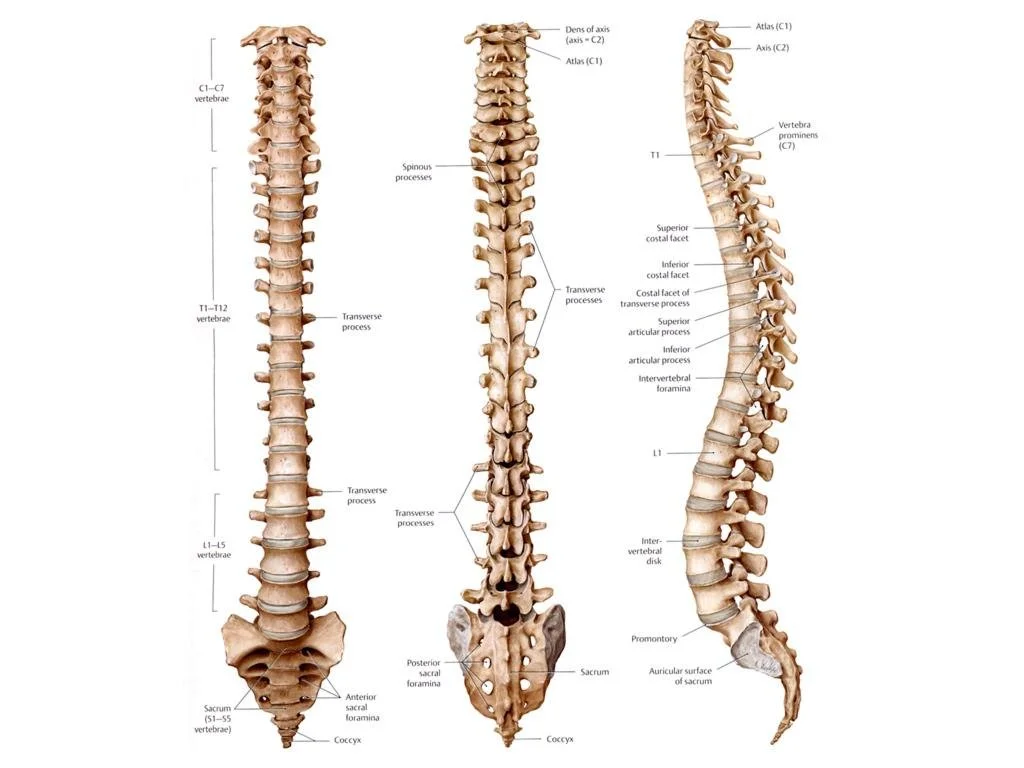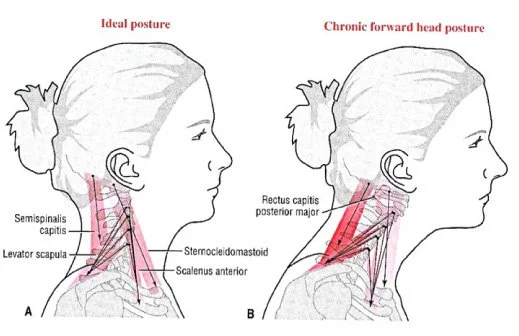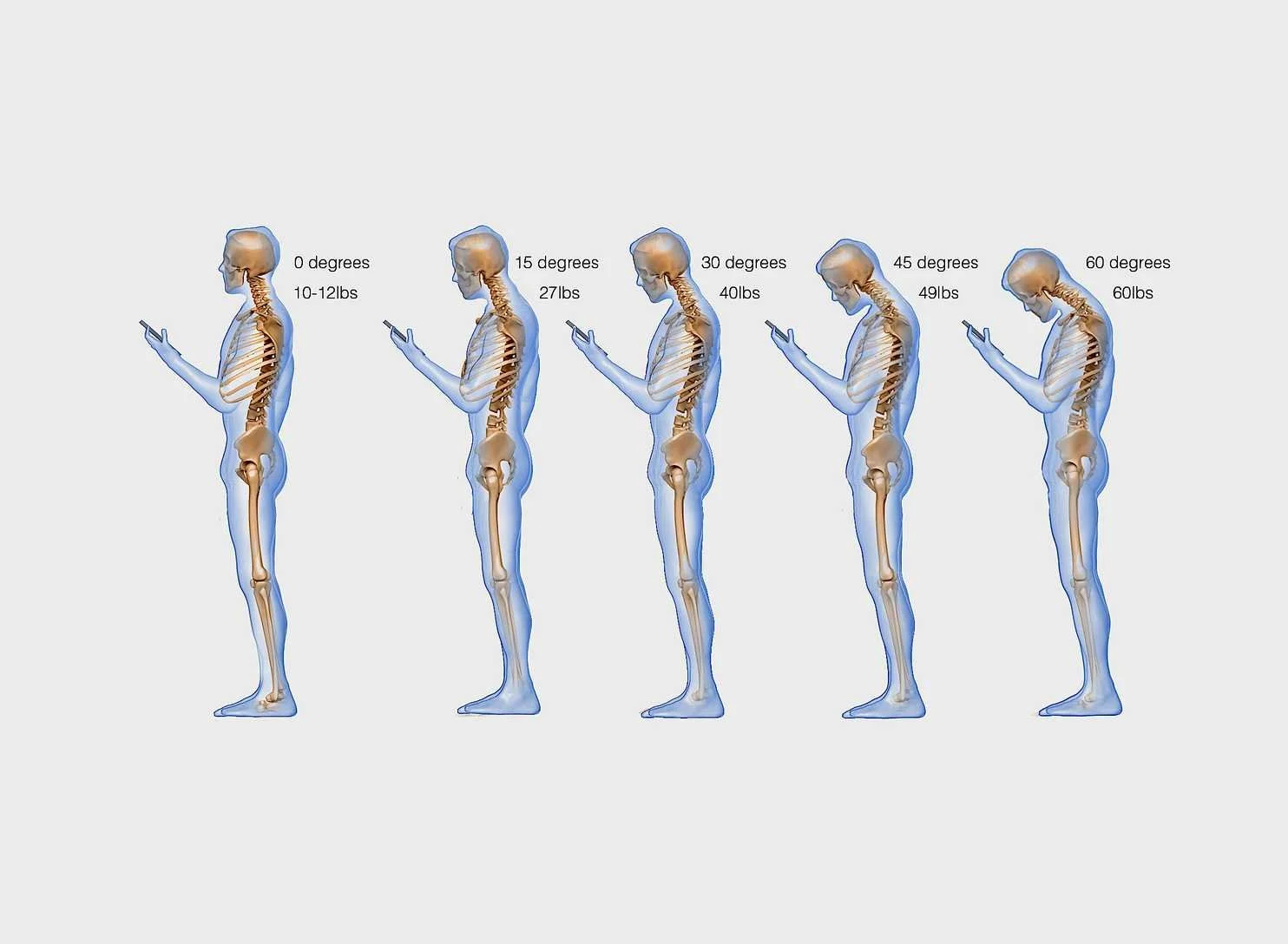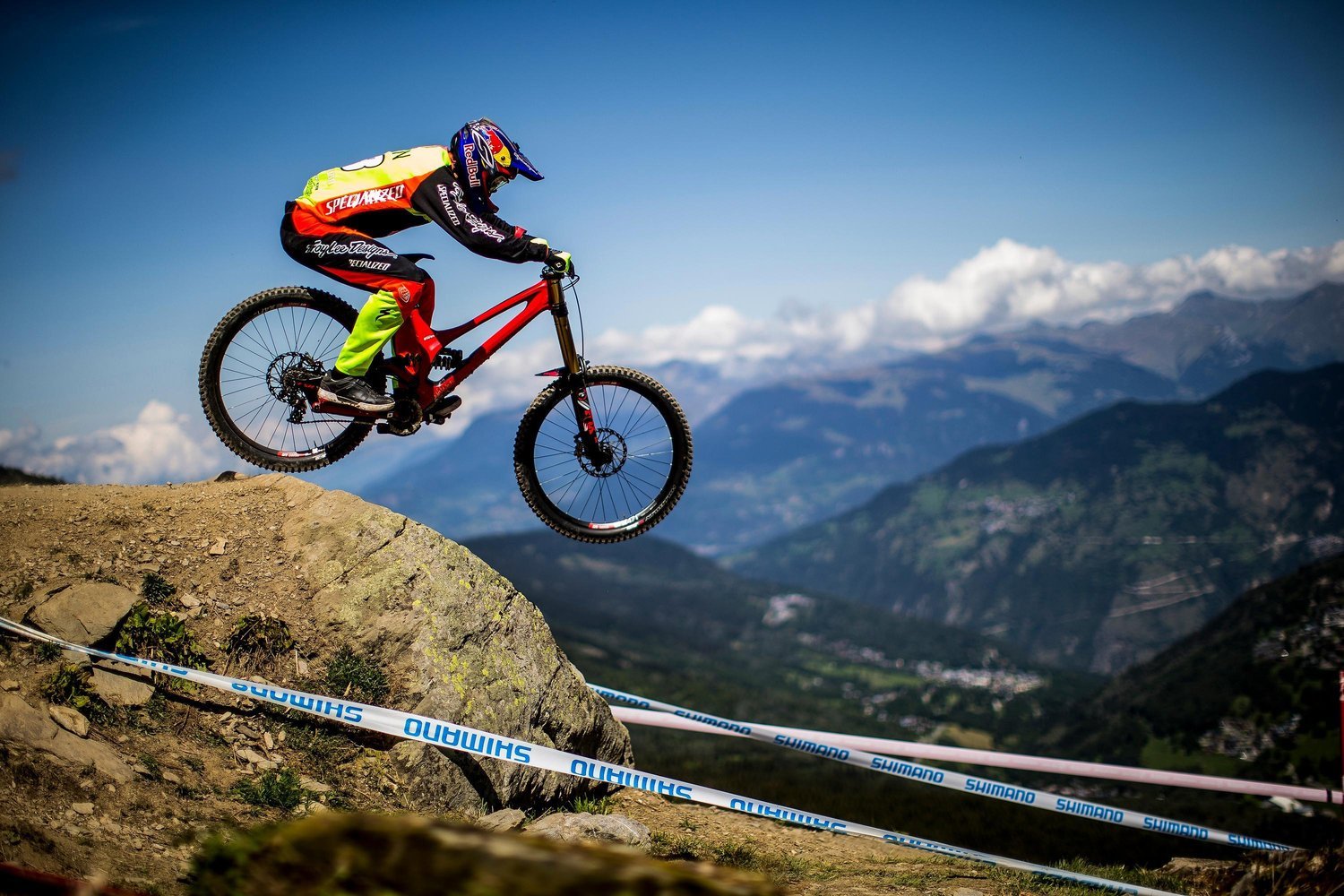My neck hurts when I ride my mountain bike.
So you're experiencing some neck pain on the mountain bike? Unfortunately, this is fairly common. Here is an example of a very common biomechanical cause, implications up and down the chain and a few quick fixes so you can start to remedy this situation if it sounds familiar.
Let's begin with an overview of your spinal anatomy and posture. These areas are huge pieces of the neck pain puzzle. First, your spine. Your spine is comprised of five specific segments, coccygeal, sacral, lumbar, thoracic and cervical. Cervical spine refers to your neck but we are going to focus more on the thoracic spine (T spine). Thoracic spine is in the middle of your back and has attachment sites for your ribs. This results in an inherently less mobile segment compared to the low back and neck.
Thoracic spine is comprised of the 12 segments in the middle of the back.
As you inspect this model you notice the third image details the "S" curve of the spine nicely. This is normal and in fact advantageous for improved mobility and stability where needed. A missing component in this image is of course the muscular anatomy. Your muscular structures provide dynamic stability to your body. Unfortunately the human body is really good at adapting to positions that are not good for it. One of the most common postural faults I see clinically and out on the trails/roads is a flexed thoracic spine and forward head posture. Spinal flexion refers to the spine moving forward, think chin to chest, spinal extension is the spine moving backward, think looking up to the ceiling.
Looks a lot like someone sitting at their desk doing computer work or even staring at the phone crushing snap chat. Not cool!
Text neck...what the hell!?! Stop this.
So, you've certainly seen this posture in your office, on the trail, everywhere. The more you chill with this posture the more you are hard wiring this pattern to be default. Not good. In addition, due to the lower amounts of mobility here compared to the lumbar and cervical spine, when a position becomes default, it likes to stay that way.
The issue here is that as you move your trunk forward into either an attack position or even just cruising along the trail, your eyes will always want to meet the horizon. Meaning as you move the trunk forward you will begin to look upward and extend your cervical spine so you can see the trail. If your thoracic spine is in a neutral or extended position you have access to your full cervical spine range of motion. If you have a rounded thoracic spine, you will need to push beyond your c spine mobility. This can cause irritation in the facet joints surrounding the cervical spine, trigger points throughout the neck and upper back as well as poor positioning while in your attack position. If you are shredding down a technical piece of trail with your t spine in a flexed position you will almost certainly lift your trunk up away from the bars to allow for easier access to cervical spine ROM ie you can see the trail easily. The body is always looking for the path of least resistance. Lifting the trunk up solves your eye sight/c spine ROM problem but decreases your control of the bike. Not good in a rock garden. Check out a few examples of the cervical spine ROM issues caused by thoracic spine misalignment...
Lack of thoracic spine extension can cause a lot of irritation at the neck as well as place the shoulders in a poor position, that's another blog post. Seem reasonable?
So, now what? Let's fix this issue! Here are a few of my favorite thoracic spine mobility exercises to help you gain access to improved extension mobility.
T spine extension with some lat mobility. Critical for the cyclist with neck irritation.
Double lax ball at the t spine with overhead shoulder ROM. Yes!
Thoracic spine rotation to address those tricky corners of your mobility.
Get consistent on your T spine mobility, especially if you work at a computer often. Open up those tissues and allow yourself improved access to new ranges of motion to keep your back flat and low with eyes up. Technical lines will feel much better when you aren't fighting a mobility problem.
Aaron Gwin shows you solid thoracic spine mobility that does not limit his neck mobility. Braaaap!
